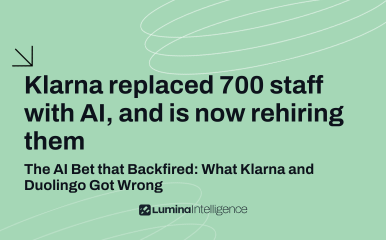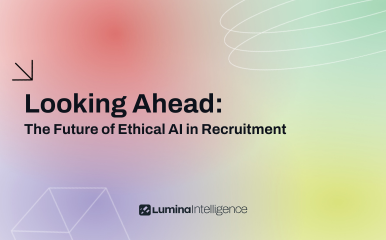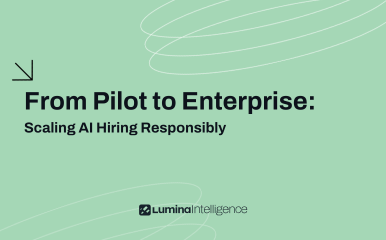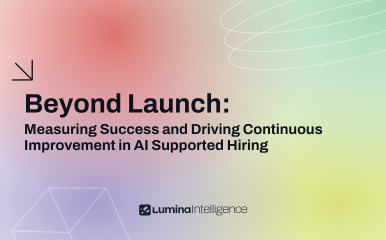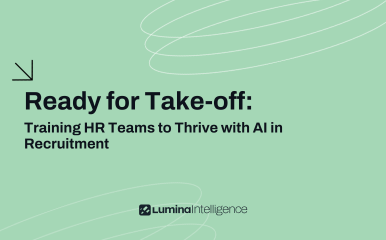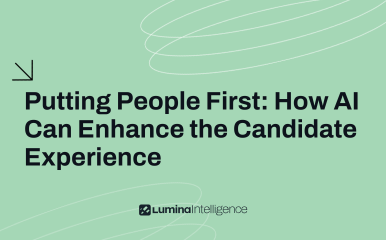In the first five posts, we covered ethics, regulation, bias, privacy and candidate experience. Those themes share one vital ingredient: people who take responsibility for the technology they use. This week, we look at human oversight and accountability in AI recruitment. Even the smartest model needs clear controls so that decisions remain fair, transparent and defensible.
Why Human Oversight Matters
- Checks and balances
Algorithms can drift, data can age, and unexpected correlations can slip in. Regular human review catches issues before they harm candidates or brand reputation. - Legal protection
The Equality Act 2010, UK GDPR and proposed EU AI Act all expect a human to be able to explain or override automated decisions that have a significant impact. - Trust and employer brand
Candidates are more willing to engage with AI tools when they know real people are watching the process and can step in if something looks wrong.
The Pillars of Accountability
- Clear ownership
Assign a named lead for every stage of the hiring funnel that involves AI. If an automated score is questioned, everyone should know who investigates. - Documented logic
Keep plain-language summaries of how each model was trained, what data it uses and why those inputs are relevant to job performance. - Right to review
Offer candidates an easy route to request human intervention or further explanation if they disagree with an automated outcome. - Audit trails
Store version histories, training data sources and adjustment notes so regulators or internal auditors can verify past decisions.
Practical Oversight Frameworks
- Human-in-the-loop workflow
Use AI to shortlist applicants but mandate human sign-off before rejections or offers are issued. - Threshold alerts
Set ranges for key metrics such as pass rates by demographic group. Trigger an alert whenever results fall outside those limits. - Scheduled model reviews
Put a calendar reminder to retrain or benchmark models every quarter, or sooner if job requirements change. - Dual-control decisions
For critical roles, require agreement from both the hiring manager and HR before finalising an AI-recommended candidate.
Avoiding Common Pitfalls
- Overlooking hidden patterns
A single accuracy metric can mask systematic errors. Review results for unexplained trends, such as repeated rejection of applicants from particular backgrounds, industries or experience levels, and trace the root cause to data or model logic rather than introducing quotas. - One-off training
Oversight is an ongoing skill. Run refresher workshops on unconscious bias and AI basics regularly, especially for new starters. - Shadow systems
Rogue spreadsheets or unofficial scoring add-ons can bypass controls. Keep tooling centralised and access-controlled.
Case Snapshot: Re-instating the Human Voice
A fintech firm noticed that its AI screener was rejecting twenty per cent more female candidates at the coding-quiz stage than male candidates with similar CVs. A fortnightly bias audit flagged the discrepancy. Investigators found that the quiz’s time-limit feature penalised applicants who took career breaks and had less recent coding practice. The firm:
- extended the time limit.
- added practice questions.
- Introduced a manual review for any score within five points of the pass mark.
Rejection-rate disparity fell to under three per cent, candidate satisfaction improved, and the story became an internal showcase of successful human oversight.
Quick-Start Checklist
- Name accountable owners for each AI tool.
- Provide candidates with a review request channel.
- Log and store every model version and training dataset.
- Set bias and performance thresholds, plus automated alerts.
- Schedule formal audits and refresher training.
Tick these boxes and you establish a governance layer that keeps AI sharp, fair and aligned with company values.
Conclusion
AI can handle volume and velocity, but only humans can provide context, empathy and final responsibility. A structured oversight framework turns technology from a black box into a transparent, reliable assistant.
What’s Next?
Week 7 will explore Training and Preparing HR Teams for AI Adoption. We will share practical ideas for upskilling recruiters so they can partner confidently with technology.
